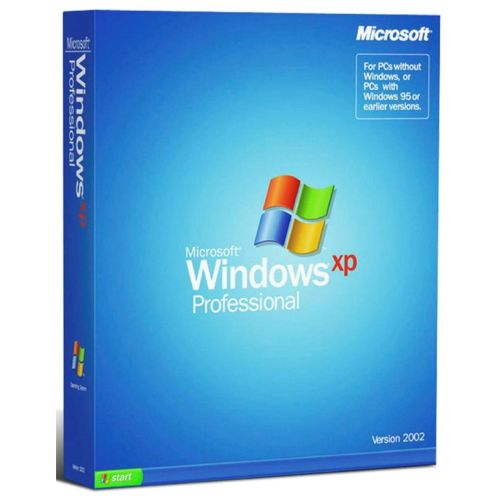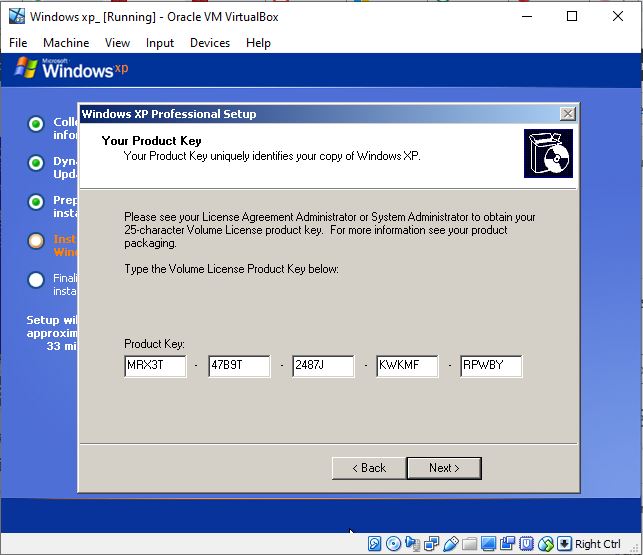
Software Contents
ToggleWindows XP Professional SP3: A Comprehensive Overview
Windows XP Professional SP3 32 Bit Released by Microsoft in October 2001, Windows XP quickly gained popularity among users and businesses for its user-friendly interface, enhanced performance, and robust features aimed at improving productivity and security. Among its various editions, Windows XP Professional became the flagship version for business environments, catering specifically to power users and enterprises. The culmination of this operating system came with the release of Service Pack 3 (SP3) in April 2008, which provided significant enhancements and updates. This article explores the features, enhancements, legacy, and impact of Windows XP Professional SP3, as well as its enduring significance in computing history.
Windows XP Professional SP3 32-bit. However, here are some keys that have been shared in forums:
-
M6TF9-8XQ2M-YQK9F-7TBB2-XGG88
-
V2C47-MK7JD-3R89F-D2KXW-VPK3J
-
B2RBK-7KPT9-4JP6X-QQFWM-PJD6G
Historical Context and Development
Windows XP was a significant departure from its predecessor, Windows 2000 and Windows Me. It was designed to integrate the best features of both consumer and business-oriented operating systems, providing a more stable, efficient, and versatile computing environment. Following its original release, Microsoft adopted a model of releasing service packs to address issues, enhance features, and improve overall system performance.
Service Packs Overview
- SP1: Released in September 2002, Windows XP Service Pack 1 provided essential updates that improved security and stability. It also included the Windows Firewall to protect users from external threats, as well as USB 2.0 support and initial enhancements to the Plug and Play system.
- SP2: Introduced in August 2004, Service Pack 2 was a monumental update that included a comprehensive overhaul of security features, the introduction of Windows Security Center, and enhanced wireless networking capabilities. SP2 solidified XP’s position in both home and office environments by addressing usability concerns related to security.
- SP3: Released in April 2008, SP3 aimed to provide a final round of updates, further enhancing performance, stability, and security while ensuring compatibility with the growing landscape of applications available at that time.

Key Features of Windows XP Professional SP3
Windows XP Professional SP3 included numerous features that catered to both individual users and businesses. Below are some of the key enhancements and features specific to this edition:
Enhanced Security
Security was a focal point of SP3, designed to protect users from emerging threats. Key security features included:
- Network Access Protection (NAP): This feature allowed network administrators to enforce security policies on computers that were connecting to the organization’s network. It could determine whether individual computers met certain health requirements before granting full access.
- Wi-Fi Protected Access (WPA): SP3 supported WPA for enhanced security in wireless networks, significantly improving encryption and authentication.
- Improved Security Center: The Security Center was updated to provide better notifications and management of firewall settings, antivirus capabilities, and automatic updates.
Performance Improvements
Performance optimizations were key features of Windows XP Professional SP3, making the operating system faster and more efficient:
- Support for Advanced File System (NTFS): SP3 continued to optimize performance on drives formatted with NTFS, making it faster to access files and manage disk space.
- Improved Memory Management: Enhancements in memory management improved overall system performance, particularly on multi-core processors that were becoming more common during the late 2000s.
Compatibility and Support
With the rapid evolution of technology, compatibility was essential, and SP3 delivered:
- Backward Compatibility: Windows XP Professional SP3 maintained compatibility with older applications designed for previous versions of Windows while also supporting newer software developed for Windows Vista and later.
- Service Pack for Software Compatibility: To help developers and IT professionals, Microsoft released a compatibility update that ensured various business applications continued to work seamlessly with SP3.
User Interface Enhancements
Windows XP Professional SP3 retained the familiar interface introduced in Windows XP while offering minor refinements:
- Improved Control Panel: The Control Panel saw enhancements to make it easier for users to navigate through settings and adjustments, improving the user experience.
- Accessibility Features: Enhanced ease of access features were included, providing better support for users with disabilities through improved screen magnification and narrator options.
Additional Tools and Enhancements
- Windows Media Player 11: SP3 included the latest version of Windows Media Player, which boasted a new interface and better support for audio and video formats, making it easier for users to manage their digital media.
- Windows Update Improvements: The update process was streamlined, making it easier for users to download and manage updates automatically, ensuring their systems remained secure and up-to-date.
- Remote Desktop Enhancements: Improvements to Remote Desktop functionality allowed users to connect to their office computers more efficiently, an increasingly important feature for mobile workers.
Support for Older Hardware
Windows XP Professional SP3 was particularly well-received for its ability to run effectively on older hardware. It provided a solution for users who wanted to extend the life of their machines, thus reducing the need for hardware upgrades. This made it a popular choice in many rural and underserved areas where the latest technology was less accessible.
The Legacy of Windows XP Professional SP3
The significance of Windows XP Professional SP3 extends far beyond its feature set. It represents a pivotal moment in the history of personal computing, with lasting impacts on technology and user expectations.
Adoption and Usage
Windows XP Professional SP3 achieved widespread adoption across various markets:
- Enterprise Use: Many businesses adopted Windows XP Professional SP3 as their standard operating system due to its stability, compatibility with legacy applications, and robust networking features. The version became a staple in corporate environments due to its balance of performance and security.
- Long-term Support: Microsoft’s commitment to supporting Windows XP extended well into the 2010s, with many businesses continuing to operate on this platform even after the official end of support in April 2014. This longevity was due to several factors, including the large base of enterprise applications running on Windows XP, coupled with the challenges associated with migration to newer operating systems.
Cultural Impact
Windows XP Professional’s influence permeated aspects of culture and technology:
- User Experience: Many users have fond memories of using Windows XP, often citing it as one of the most enjoyable and intuitive operating systems to date. Its simplicity and efficiency set a benchmark for user experience that subsequent versions sought to replicate.
- Community and Support: A vibrant user community surrounding Windows XP emerged, fostering websites, forums, and user groups dedicated to maximizing the experience. The community shared tips, tricks, and software designed to enhance XP, creating a rich ecosystem of user-driven support.
Innovations and Influence on Future Operating Systems
The legacy of Windows XP Professional SP3 also influenced the design and development of subsequent Microsoft operating systems. Key takeaways include:
- Focus on Usability: The streamlined UI and user-friendly features of Windows XP set new standards for usability that Microsoft aimed to carry forward.
- Security as a Priority: The importance placed on security features during the development of SP3 led Microsoft to adopt a more security-centric approach in future releases, including Windows Vista and Windows 7.
- Stability and Performance: The balance of performance and reliability in Windows XP informed the development strategies for future operating systems, leading to more stable and efficient environments.
Challenges and Criticisms
Despite its popularity, Windows XP Professional SP3 was not without its criticisms:
Security Vulnerabilities
While SP3 enhanced security, it could not shield users entirely from threats:
- Ransomware and Malware: As cyber threats became more sophisticated, Windows XP was increasingly targeted. Post-support, users faced growing vulnerabilities, as Microsoft no longer provided security updates.
- Legacy Applications: Every added layer of software on top of XP could introduce new vulnerabilities, creating a security challenge for organizations that continued to rely on outdated systems.
Transition to Newer Operating Systems
The eventual push away from Windows XP marked significant challenges for users and businesses:
- Compatibility Issues: Migrating to newer operating systems like Windows 7 and Windows 8 presented challenges, particularly for businesses reliant on specialized applications designed for XP.
- User Adaptation: Users often faced a steep learning curve when switching to new operating systems, leading to frustration and productivity loss during the transition period.
End of Support Effects
The end of support for Windows XP in April 2014 left many organizations grappling with the implications of continuing to use that platform:
- Concerns Over Security: Companies that remained on XP risked exposing themselves to a host of security vulnerabilities, and many firms opted to transition to newer systems to ensure compliance and security.
- Financial Costs: The cost of upgrading hardware and software to support newer operating systems could be significant, particularly for small businesses operating on limited budgets.
Conclusion
Windows XP Professional SP3 remains a landmark operating system in the annals of computing. It set the standard for usability, security, and compatibility during an era of rapid technological advancement. With its user-friendly interface, integrated security features, and ongoing support from Microsoft, XP Professional SP3 became the preferred choice for millions of users and organizations worldwide.
Despite the emergence of newer operating systems, the legacy of Windows XP Professional SP3 continues to resonate. It laid a foundation for modern computing and nurtured a devoted user community. As we look back on its impact, it’s clear that Windows XP Professional SP3 was more than just an operating system; it was a critical chapter in the ongoing story of personal computing, influencing the trajectory of future operating systems and the expectations of users for years to come.
Even as technology progresses and newer systems take hold, the memory of Windows XP Professional SP3 endures, celebrated for its innovations and contributions to the world of computing. Whether in nostalgic forums or discussions among tech enthusiasts, the spirit of Windows XP lives on as a symbol of a pivotal time in the evolution of personal computing.





